Related Research Articles

Rodney Glen King was an African American man who was a victim of police brutality. On March 3, 1991, he was severely beaten by officers of the Los Angeles Police Department (LAPD) during his arrest after a high speed pursuit for driving while intoxicated on the I-210. An uninvolved resident, George Holliday, saw and filmed the incident from his nearby balcony and sent the footage, which showed the unarmed King on the ground being beaten after initially evading arrest, to local news station KTLA. The incident was covered by news media around the world and caused a public uproar.
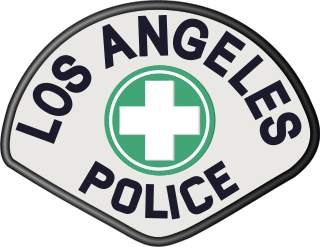
The Los Angeles Police Department (LAPD), officially known as the City of Los Angeles Police Department, is the primary law enforcement agency of Los Angeles, California, United States. With 8,832 officers and 3,000 civilian staff, it is the third-largest municipal police department in the United States, after the New York City Police Department and the Chicago Police Department.
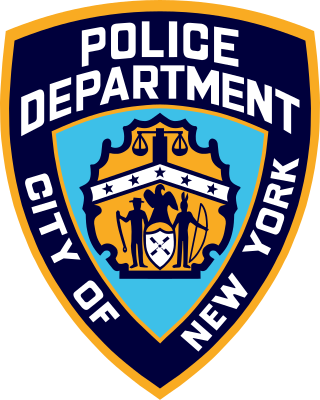
The New York City Police Department (NYPD), officially the City of New York Police Department, is the primary law enforcement agency within New York City. Established on May 23, 1845, the NYPD is the largest and one of the oldest, municipal police departments in the United States.
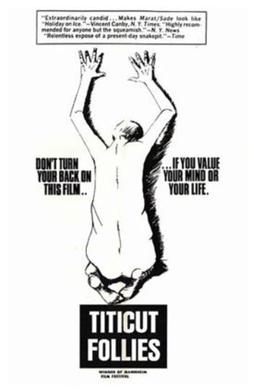
Titicut Follies is a 1967 American direct cinema documentary film produced, written, and directed by Frederick Wiseman and filmed by John Marshall. It deals with the patient-inmates of Bridgewater State Hospital for the Criminally Insane, a Massachusetts Correctional Institution in Bridgewater, Massachusetts. The title is taken from that of a talent show put on by the hospital staff. Titicut is the Wampanoag name for the nearby Taunton River.
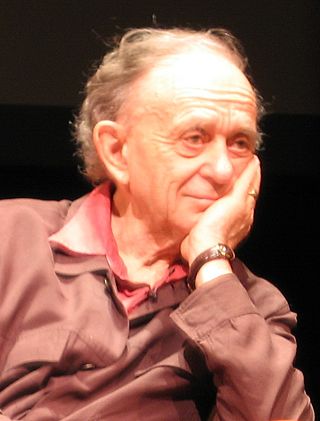
Frederick Wiseman is an American filmmaker, documentarian, and theater director. His work is primarily about exploring American institutions. In 2017, The New York Times called him "one of the most important and original filmmakers working today".
Cops is an American reality legal television documentary programming series that is currently in its 36th season. It is produced by Langley Productions and premiered on the Fox network on March 11, 1989. The series, known for chronicling the lives of law enforcement officials, follows police officers and sheriff's deputies, sometimes backed up by state police or other state agencies, during patrol, calls for service, and other police activities including prostitution and narcotic stings, and occasionally the serving of search/arrest warrants at criminal residences. Some episodes have also featured federal agencies. The show's formula follows the cinéma vérité convention, which does not consist of any narration, scripted dialogue or incidental music/added sound effects, depending entirely on the commentary of the officers and on the actions of the people with whom they come into contact, giving the audience a fly on the wall point of view. Each episode typically consists of three self-contained segments which often end with one or more arrests.
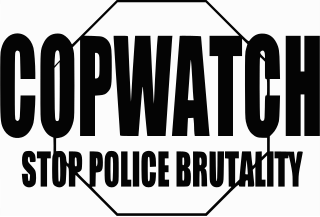
Copwatch is a network of typically autonomous activist organizations, focused in local areas in the United States, Canada, and Europe, that observe and document police activity looking for signs of police misconduct and brutality. They believe that monitoring police activity on the streets is a way to prevent police brutality. They also propose theoretical and practical approaches to security and justice structures to replace the police. They criticize capitalism and see crime as a consequence of social problems that cannot be fought by surveillance and punishment.

Police Academy 4: Citizens on Patrol is a 1987 American comedy film. It is the fourth installment in the Police Academy franchise. It was released on April 3, 1987 and is the sequel to Police Academy 3: Back in Training.
The killing of Timothy Stansbury Jr. occurred in New York City on January 24, 2004. Stansbury was an unarmed 19-year-old in New York City who was shot and killed by New York Police Department Officer Richard S. Neri Jr. Officer Neri and a partner were patrolling the rooftop of a housing project in the Bedford-Stuyvesant neighborhood of Brooklyn at about 1 a.m. Officer Neri, with his gun drawn, approached a rooftop door to check the stairway inside. Neri testified to a Brooklyn grand jury that he fired his standard Glock 19 pistol unintentionally when he was startled as Stansbury pushed open the rooftop door. Stansbury, a resident of an adjoining building, died from one shot in the chest. The grand jury found the shooting to be accidental.

The Police Benevolent Association of the City of New York (PBA) is the largest police union representing police officers of the New York City Police Department. It represents about 24,000 of the department's 36,000 officers.
The Police Tapes is a 1977 documentary about a New York City police precinct in the South Bronx. The original ran ninety minutes and was produced for public television; a one-hour version later aired on ABC.

The Cincinnati Police Department is the primary law enforcement agency of Cincinnati, Ohio. The department has 1,053 sworn officers and 119 non-sworn employees.

Throughout the history of the New York City Police Department, numerous instances of corruption, misconduct, and other allegations of such, have occurred. Over 12,000 cases have resulted in lawsuit settlements totaling over $400 million during a five-year period ending in 2014. In 2019, misconduct lawsuits cost the taxpayer $68,688,423, a 76 percent increase over the previous year, including about $10 million paid out to two exonerated individuals who had been falsely convicted and imprisoned.

The Kansas City Police Department (KCPD) is the principal law enforcement agency serving Kansas City, Missouri. Jackson County 16th Circuit Court Circuit Court Judge Jen Phillips swore in Stacey Graves as the 46th chief of police of the KCPD on December 15, 2022. Graves, who served as head of the KCPD's Deputy Chief of the Patrol Bureau, became the city's 46th police chief on December 15, 2022.
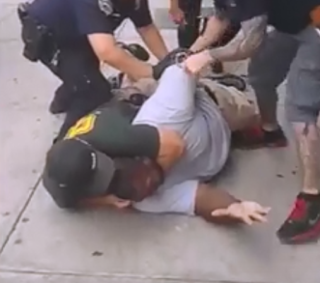
On July 17, 2014, Eric Garner, a 43-year-old African American man, was killed in the New York City borough of Staten Island by Daniel Pantaleo, a New York City Police Department (NYPD) officer, after the latter put him in a prohibited chokehold while arresting him. Video footage of the incident generated widespread national attention and raised questions about the use of force by law enforcement.

On November 22, 2014, Tamir E. Rice, a 12-year-old African American boy, was killed in Cleveland, Ohio, by Timothy Loehmann, a 26-year-old white police officer. Rice was carrying a replica toy gun; Loehmann shot him almost immediately upon arriving on the scene. Two officers, Loehmann and 46-year-old Frank Garmback, were responding to a police dispatch call regarding a male who had a gun. A caller reported that a male was pointing "a pistol" at random people at the Cudell Recreation Center, a park in the City of Cleveland's Public Works Department. At the beginning of the call and again in the middle, he says of the pistol "it's probably fake." Toward the end of the two-minute call the caller states that "he is probably a juvenile", but the dispatcher did not relay either of these statements to Loehmann and Garmback.

On December 20, 2014, Ismaaiyl Abdullah Brinsley shot and killed Rafael Ramos and Wenjian Liu — two on-duty New York City Police Department (NYPD) officers — in the Bedford–Stuyvesant neighborhood of Brooklyn. Brinsley then fled into the New York City Subway, where he killed himself. Earlier in the day, before he killed Ramos and Liu, Brinsley had shot and wounded his ex-girlfriend Shaneka Thompson in Baltimore after initially pointing the gun at his own head.
On July 19, 2015, in Cincinnati, Ohio, Samuel DuBose, an unarmed man, was fatally shot by Ray Tensing, a University of Cincinnati police officer, during an off-campus traffic stop for not having the front license plate on the vehicle.
Cariol Holloman-Horne is an American former police officer who was fired from the Buffalo Police Department and lost her pension after she physically stopped a fellow officer from chokeholding a handcuffed suspect in 2006. In October 2020, Buffalo adopted "Cariol's Law," to require police to intervene if a fellow officer uses excessive force. In 2021, a New York court awarded her the pension and back pay she earned.
References
- 1 2 Stempel, Tom (May 1996). Storytellers to the Nation: A History of American Television Writing. Syracuse University Press. p. 76. ISBN 9780815603689.
- 1 2 Aitken, Ian (18 October 2013). Encyclopedia of the Documentary Film 3-Volume Set. Routledge. pp. 775–777. ISBN 9781135206208.
- 1 2 3 4 Berg, Beatrice (1970-02-01). "'I Was Fed Up With Hollywood Fantasies'". The New York Times. Retrieved 2017-04-21.
- 1 2 Scott, A.; Dargis, Manohla (2017-04-06). "Frederick Wiseman: The Filmmaker Who Shows Us Ourselves". The New York Times. ISSN 0362-4331. Archived from the original on 2017-04-17. Retrieved 2017-04-21.
- 1 2 Eames, David (1977-10-02). "WATCHING WISEMAN WATCH". The New York Times. ISSN 0362-4331 . Retrieved 2017-04-21.
- ↑ Gent, George (1969-02-27). "MOVIE ON POLICE CENSORED BY N.E.T.; 'Law and Order' Program Cut to Remove Obscenities". The New York Times. p. 83. Retrieved 2017-04-19.